Abstract
Faraday Base represents a small isolated community producing its own domestic water by desalination of sea water. During the Antarctic winter of 1986 (April to October), regular bacteriological examination of the water supply and surrounding sea took place. Samples were collected and examined every 2 weeks by the methods described in the Department of Health and Social Security Report No. 71, on the Bacteriological Examination of Drinking Water Supplies (DHSS, 1982), for membrane filtration and colony counting. The results of these examinations are presented in this paper. The results obtained suggest that water of good bacteriological quality was produced by the desalination plant, but some samples from the distribution system contained coliforms or presumptive Escherichia coli in small numbers. The possible reasons for this low-level contamination are discussed. No cases of gastroenteritis occurred on the base during this time.
Full text
PDF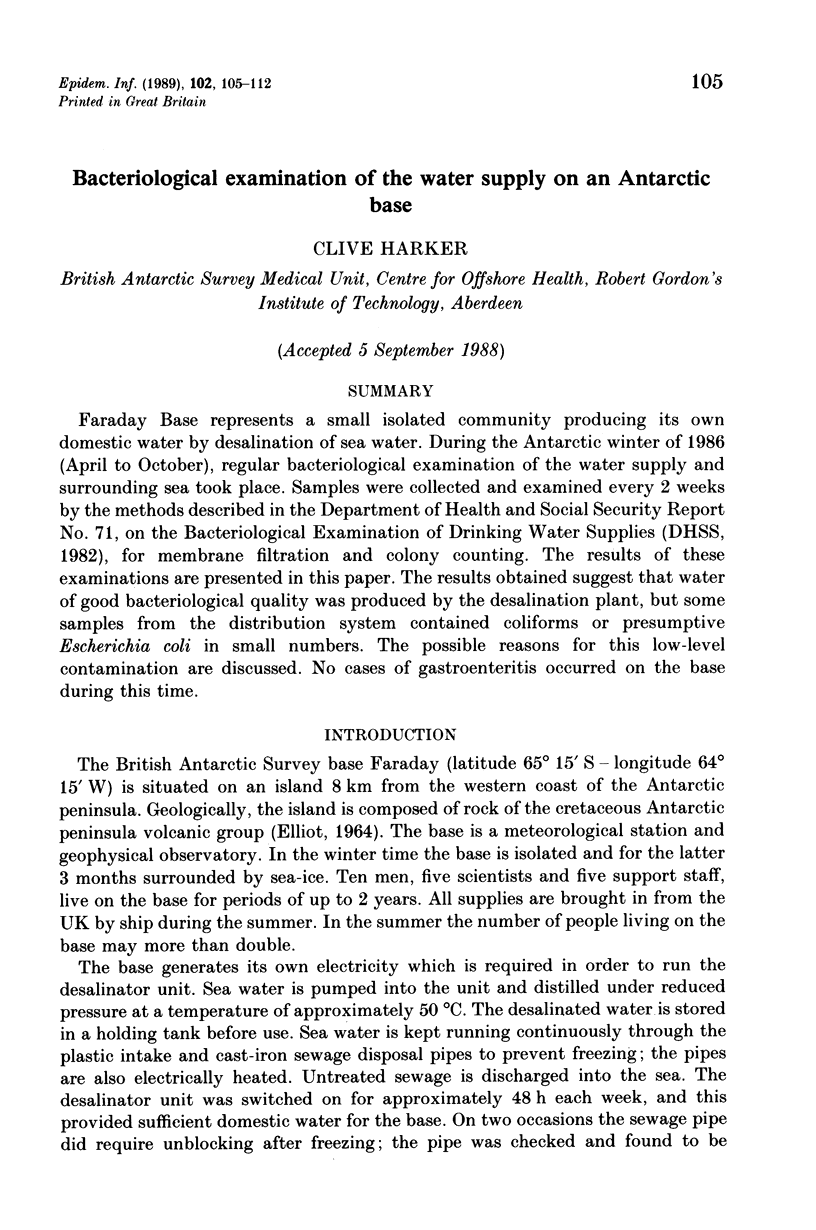
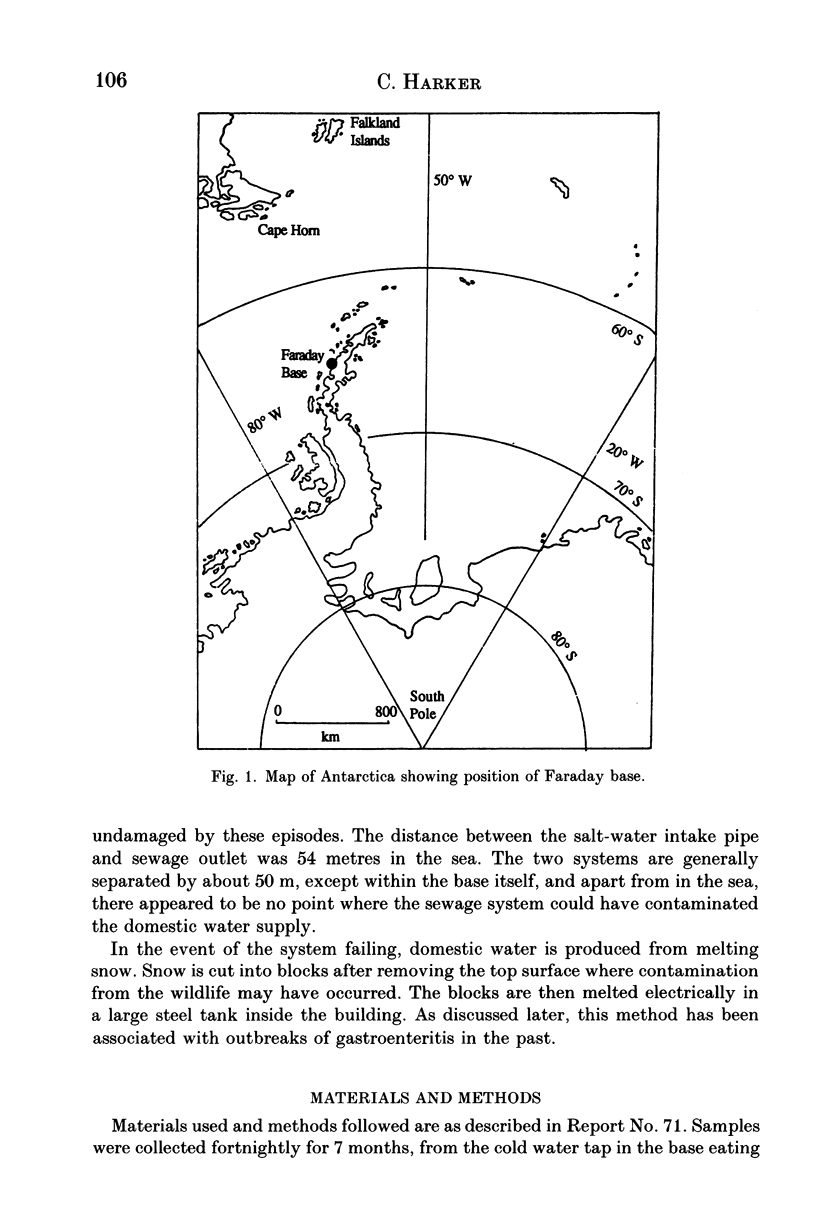
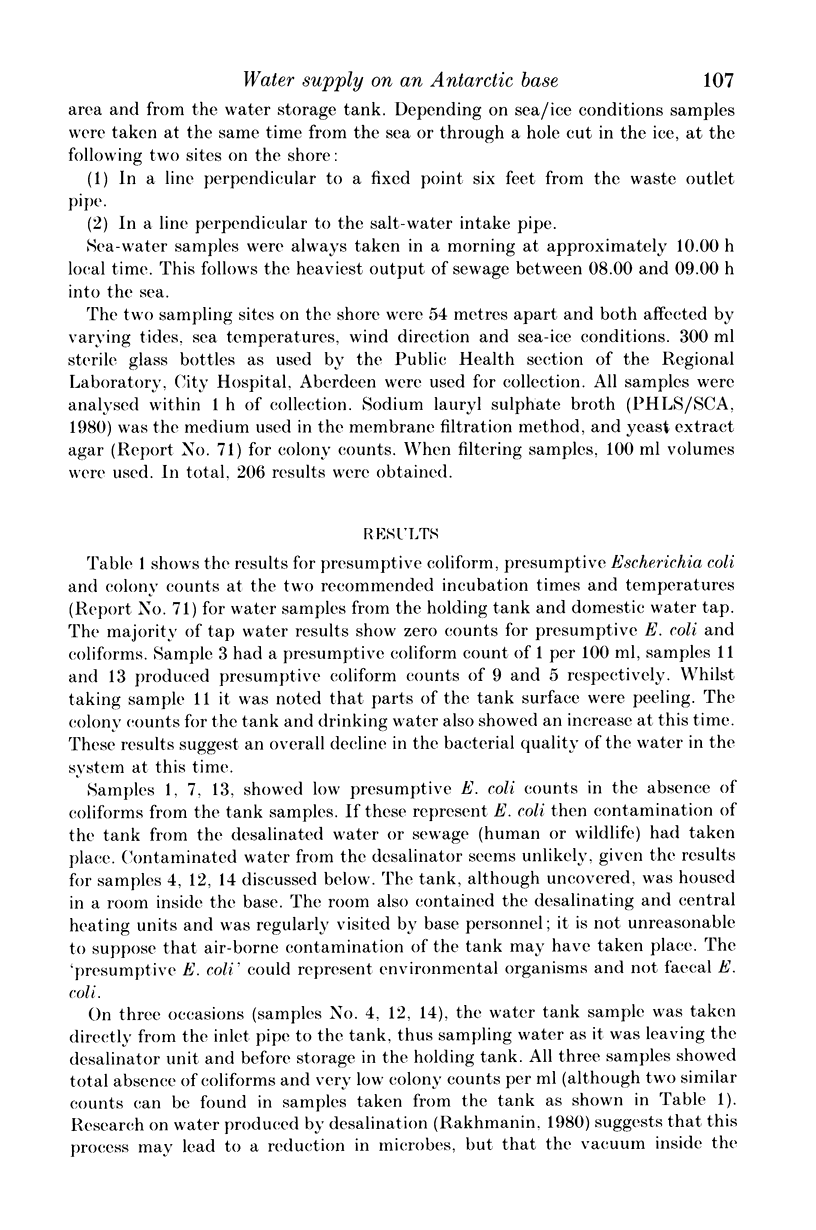
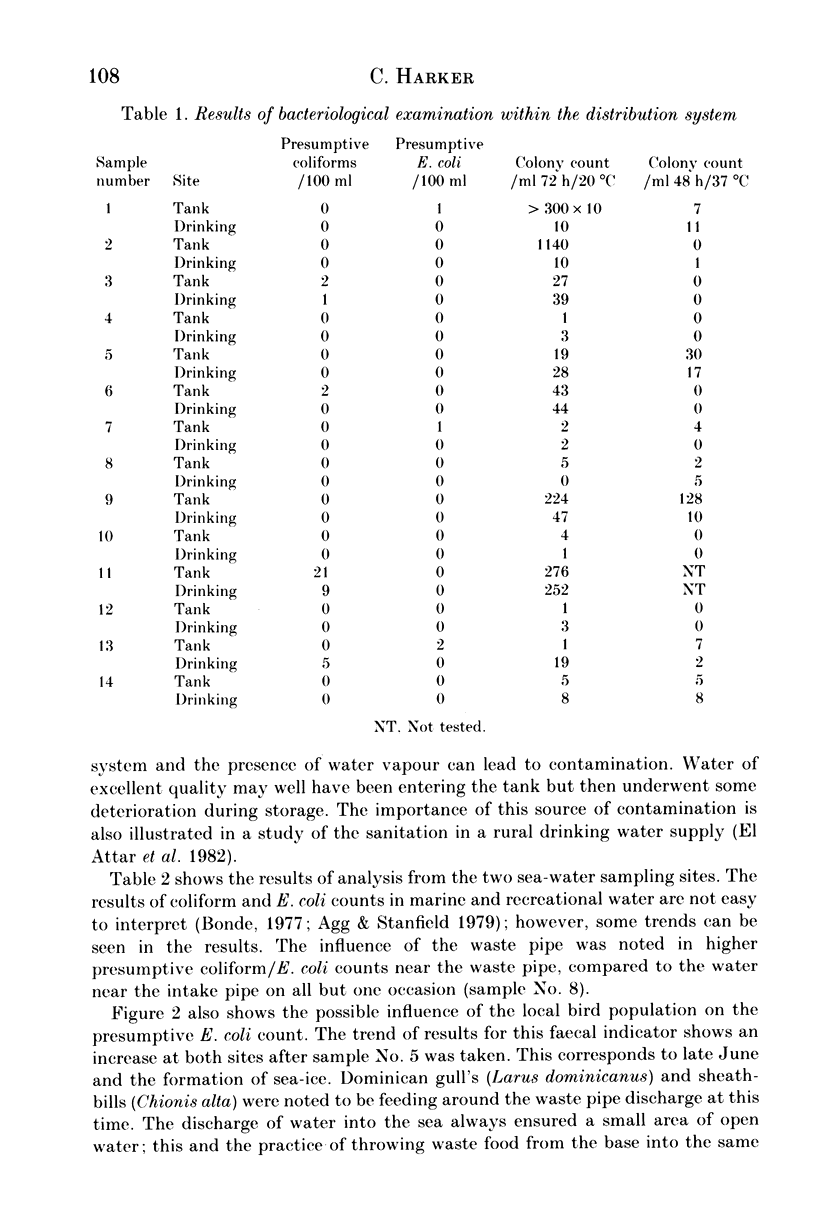
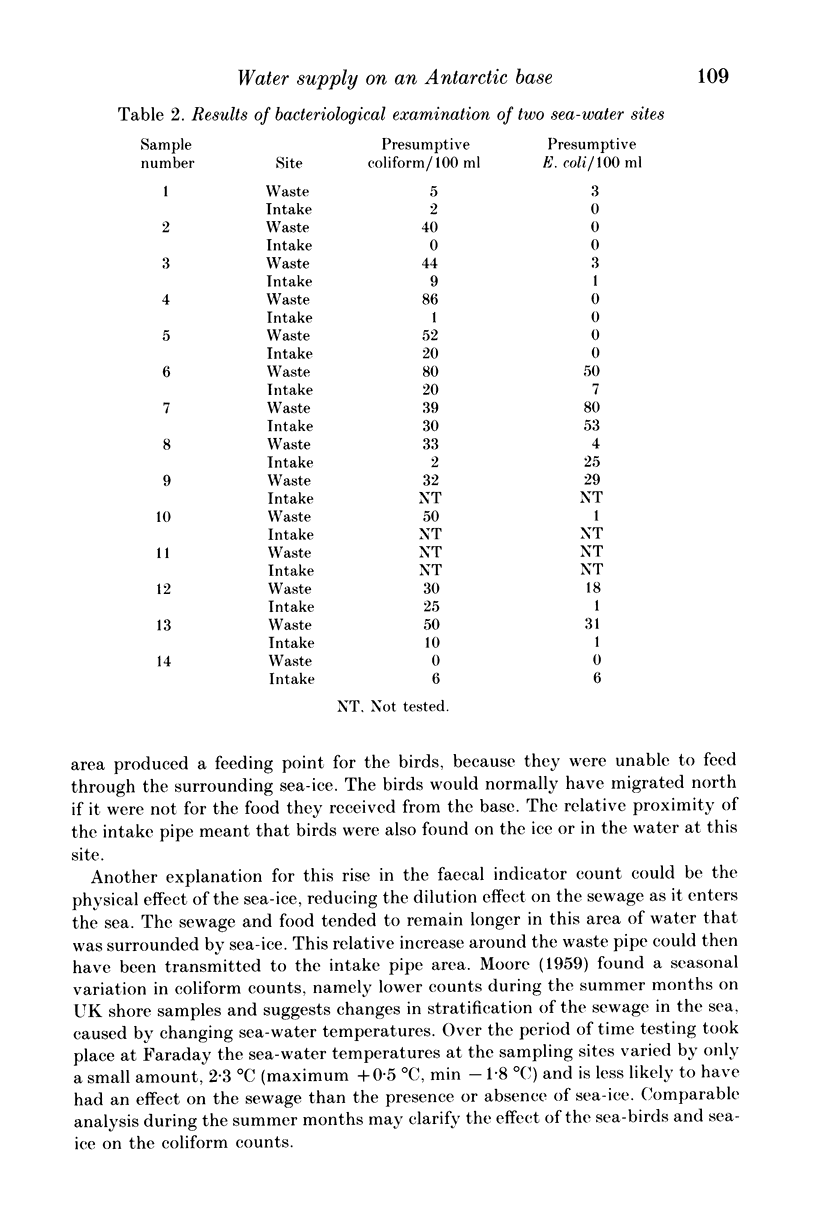
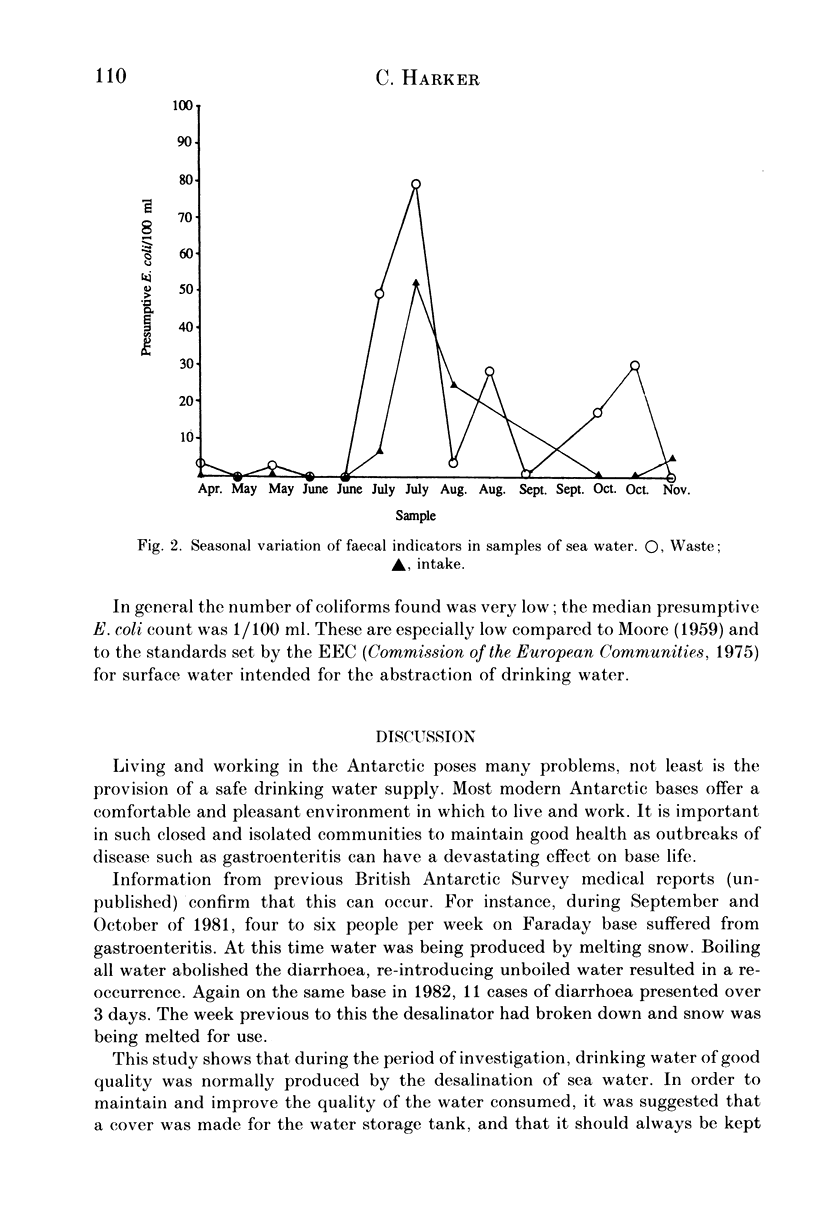
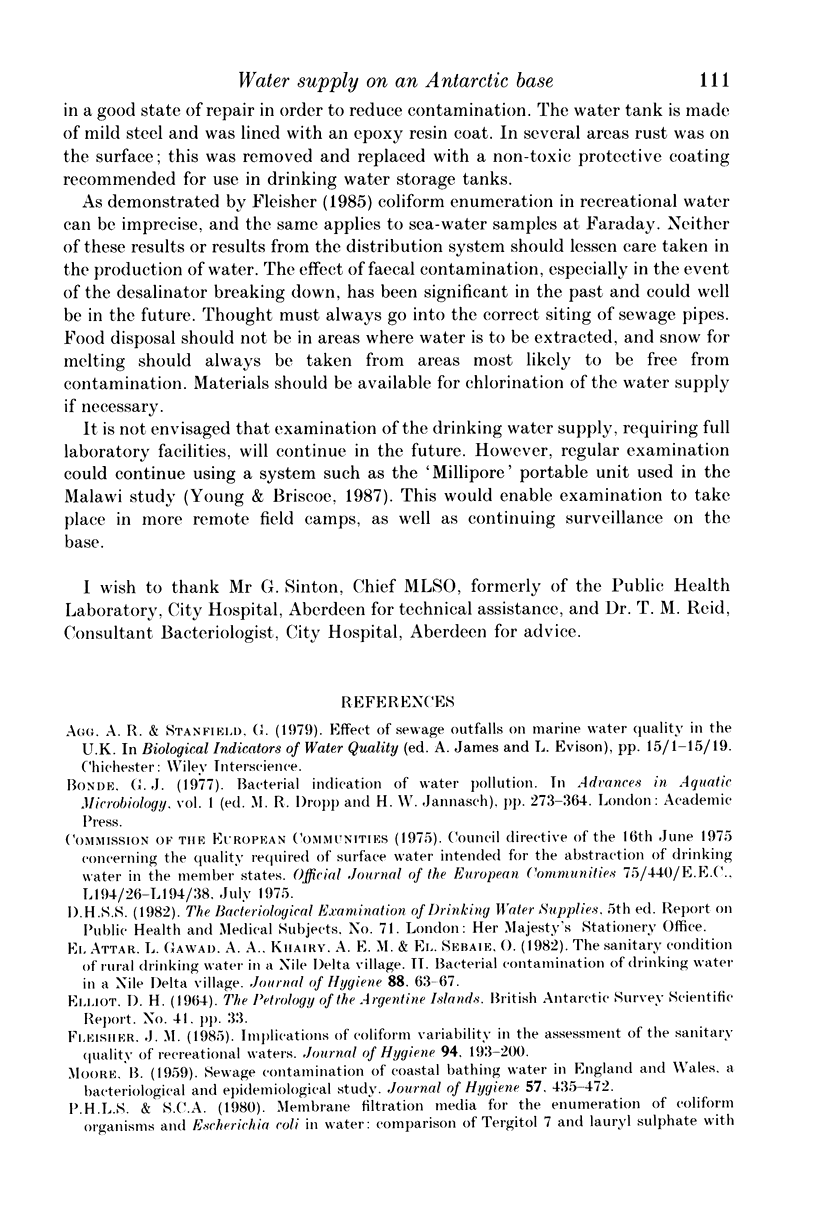
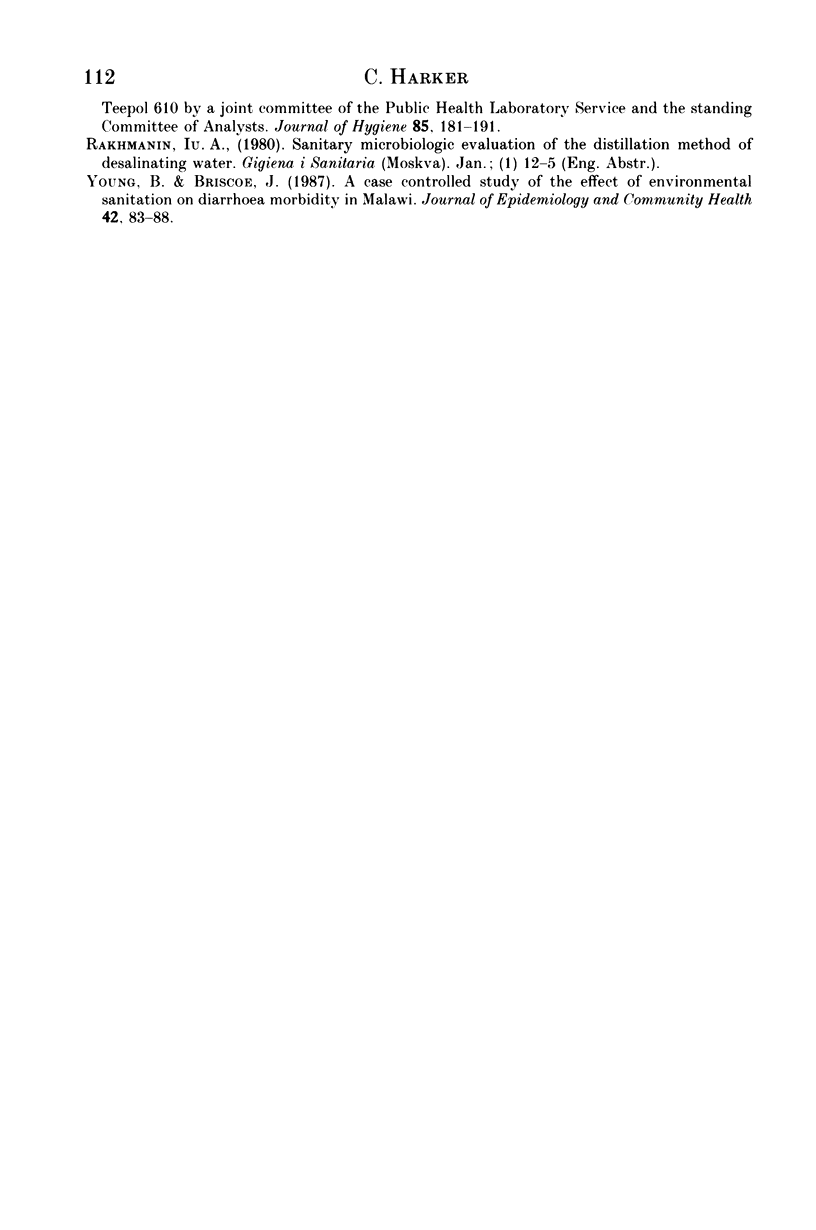
Selected References
These references are in PubMed. This may not be the complete list of references from this article.
- El Attar L., Abdel Gawad A., Khairy A. E., El Sebaie O. The sanitary condition of rural drinking water in a Nile Delta village. II. Bacterial contamination of drinking water in a Nile Delta village. J Hyg (Lond) 1982 Feb;88(1):63–67. doi: 10.1017/s0022172400069904. [DOI] [PMC free article] [PubMed] [Google Scholar]
- Young B., Briscoe J. A case-control study of the effect of environmental sanitation on diarrhoea morbidity in Malawi. J Epidemiol Community Health. 1988 Mar;42(1):83–88. doi: 10.1136/jech.42.1.83. [DOI] [PMC free article] [PubMed] [Google Scholar]


